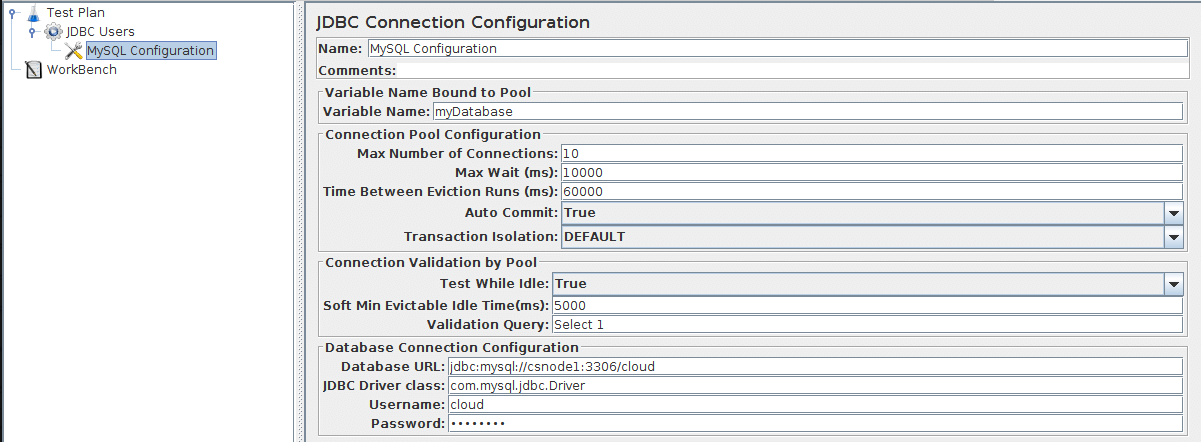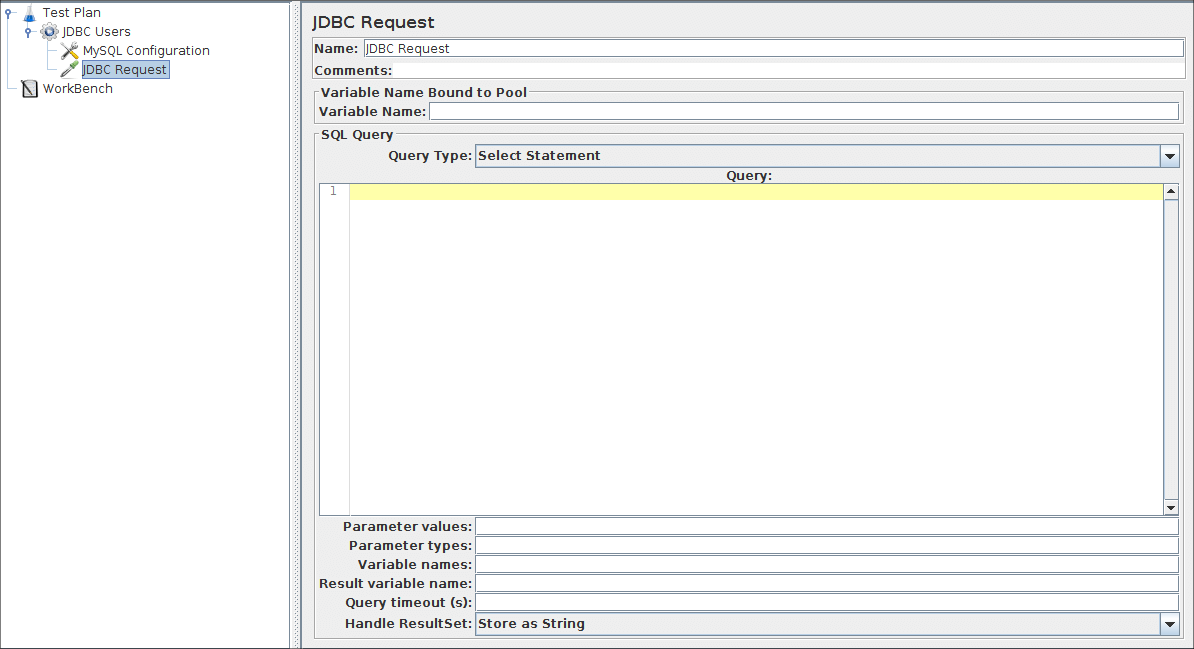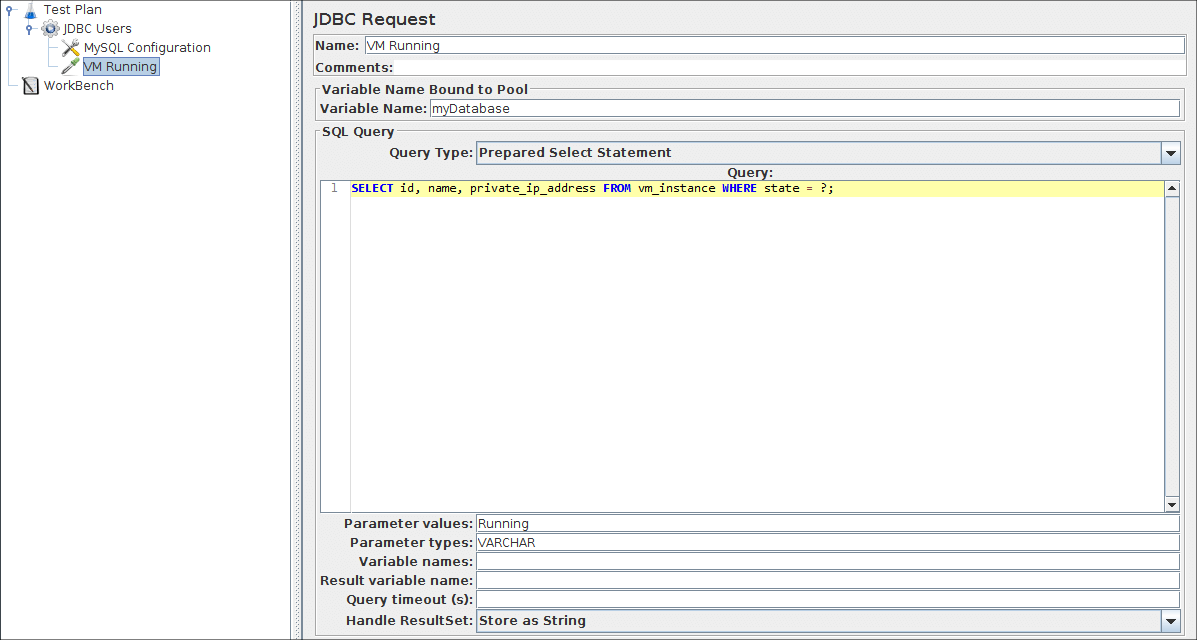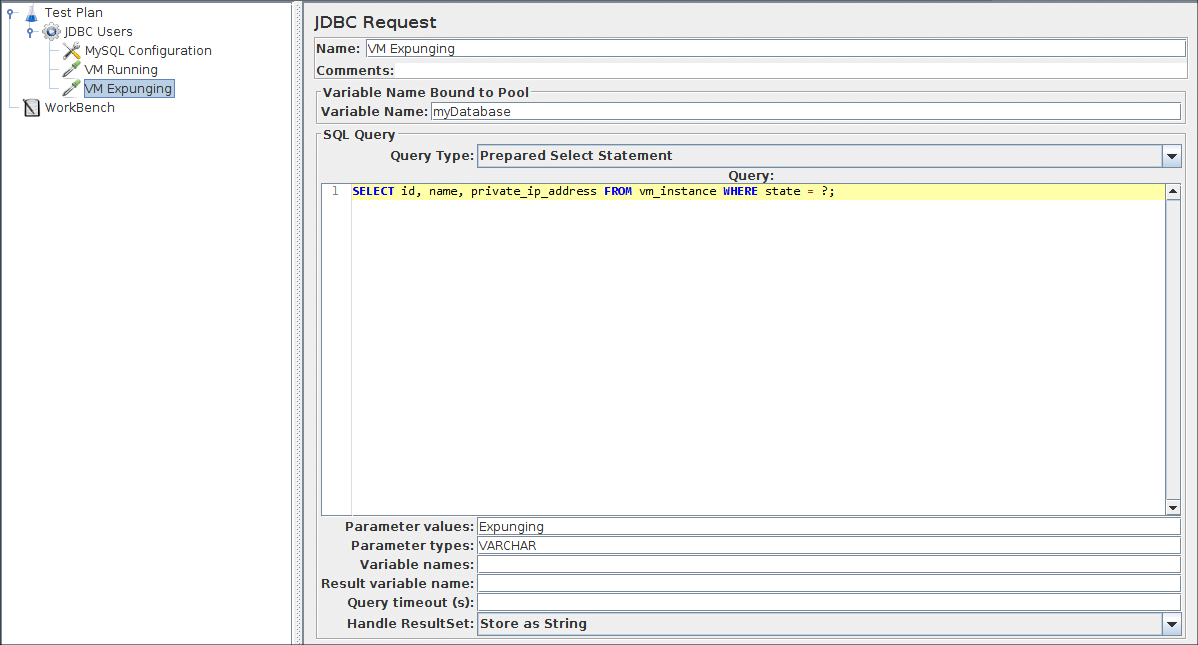JMeter Building a Database Test Plan
| Building a Database Test Plan | |
|
|
| 7.1 Adding Users | ||||
|
||||
| 7.2 Adding JDBC Requests | |||||
|
|||||
| 7.3 Adding a Listener to View/Store the Test Results | |
|
JMeter Building a Database Test Plan的更多相关文章
- Building An Effective Marketing Plan
“New ideas are a dime a dozen,” observes Arthur R. Kydd, “and so are new products and new technologi ...
- Building an FTP Test Plan
参考:http://jmeter.apache.org/usermanual/build-ftp-test-plan.html 1.创建一个线程组 2.线程组--->添加--->配置元件- ...
- Jmeter 建立数据库测试计划
建立数据库测试计划(Building a Database Test Plan) 在本节中,将学习如何创建测试数据库服务器一个简单的测试计划.您将创建五十个用户向数据库服务器发送2个SQL请求.并且, ...
- Database 2 Day DBA guide_Chapter3
Chapter 3: Getting Started with Oracle Enterprise Manager 第三章:开始oracle企业管理器. Purpose(目的) This chapte ...
- 性能测试--Jmeter随机生成/随机选取/csv读取关键字
Jmeter随机生成/随机选取/csv读取关键字 一.随机生成关键字 随机生成关键字,需要组件:随机变量配置元件(Random Variable) 该组件的作用是生成字符+随机数字格式的字符串,并保 ...
- 性能测试--初识Jmeter
初识Jmeter Apache JMeter是Apache组织开发的基于Java的压力测试工具.用于对软件做压力测试,它最初被设计用于Web应用测试,但后来扩展到其他测试领域. 它可以用于测试静态和动 ...
- Apache Kafka - How to Load Test with JMeter
In this article, we are going to look at how to load test Apache Kafka, a distributed streaming plat ...
- Automatically generating nice graphs at end of your Load Test with Apache JMeter and JMeter-Plugins
Update as of November 2017: Since JMeter 3.0, last version being 3.3, JMeter provides Out Of The Box ...
- Apache JMeter
https://en.wikipedia.org/wiki/Apache_JMeter Apache JMeter 是 Apache 的一个项目,它是一个负载测试工具可以用于进行各种服务器的性能测试分 ...
随机推荐
- emacs快捷键学习(一)--Linux最强大的编辑器
emacs是一个非常强大的编辑器.经常使用的快捷键总结例如以下: 退出emacs:ctrl+x ctrl+c 移动到下一屏:ctrl+v 移动到上一屏:alt+v 将光标所在行移动到屏幕中间:ctrl ...
- Android开发编码规范(自用)
转载请注明本文出自Cym的博客(http://blog.csdn.net/cym492224103),谢谢支持! Android开发编码规范 目的及指导原则 目的 统一规范 Eclipse编辑环境 ...
- Java基础知识强化60:经典查找之二分查找
1. 二分查找 二分查找又称折半查找,优点是比较次数少,查找速度快,平均性能好:其缺点是要求待查表为有序表,且插入删除困难.因此,折半查找方法适用于不经常变动而查找频繁的有序列表. 比较 ...
- ansible 学习与实践
title: ansible 学习与实践 date: 2016-05-06 16:17:28 tags: --- ansible 学习与实践 一 介绍 ansible是新出现的运维工具是基于Pytho ...
- 《HTML5经典坦克大战》游戏(代码)
前几天粗略地学了HTML5,然后就用它写了一个<经典坦克大战>游戏. 现在想分享一下我写的代码,写得不好请大家多多指教. 给大家推荐一个网站,这个网站是为大学生而做,为方便学习编程的同学而 ...
- Flask学习记录之Flask-Admin
相信用过Django框架的都不会忘记它强大的Admin功能,Flask-admin是一款能够与Django Admin所媲美的扩展,能够快速创建Web管理界面,实现了用户.文件增删改查等常用功能:也可 ...
- k-means均值聚类算法(转)
4.1.摘要 在前面的文章中,介绍了三种常见的分类算法.分类作为一种监督学习方法,要求必须事先明确知道各个类别的信息,并且断言所有待分类项都有一个类别与之对应.但是很多时候上述条件得不到满足,尤其是在 ...
- BASE64的实现
原由 项目中经常需要使用base64进行处理,通过base64可以将特殊字符转化为普通可见字符,便于网络传输,代价是增长了传输长度. base64将每3个byte转化为4个6bit位,然后高位补两个零 ...
- 2016年最受欢迎中国开源软件TOP 20
开源软件对程序员来说是一个经常接触的软件,作为一个经常接触的软件,当然想知道自己用的软件受欢迎程度,基于此,开源中国在近日公布“2016年度最受欢迎中国开源软件评选”结果,在TOP20榜单中,前5名分 ...
- IOS流媒体播放
IOS流媒体播放 1. 这里的流媒体地址是指服务端那边已经调好格式的可以在ios上播放的视频流. 下面提供几个视频流的地址: NSString *linkStr = http://61.160.2 ...







